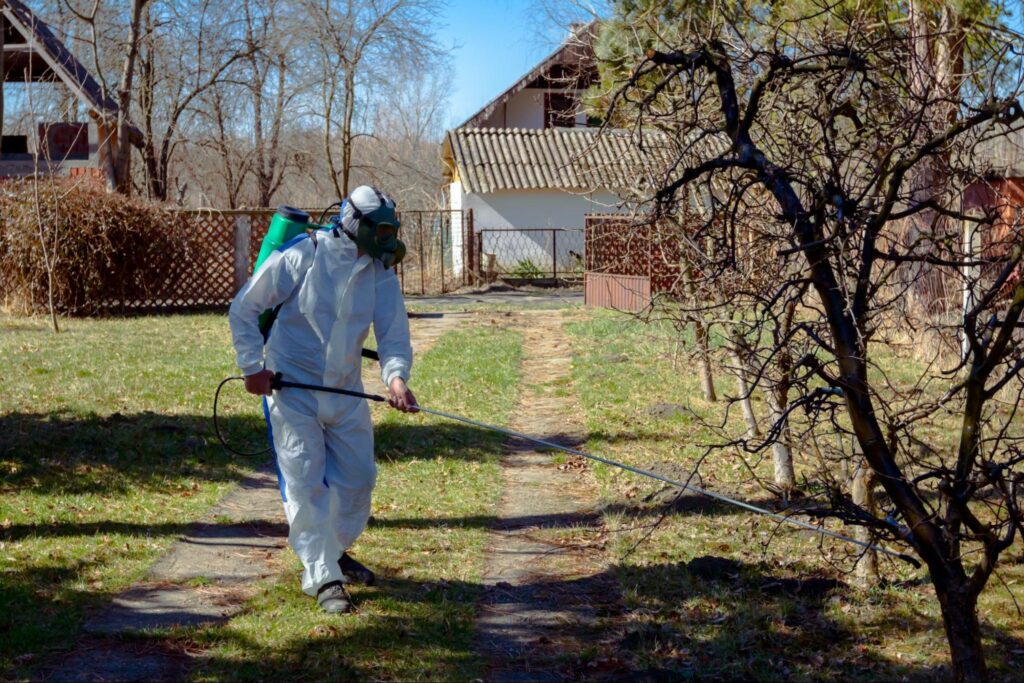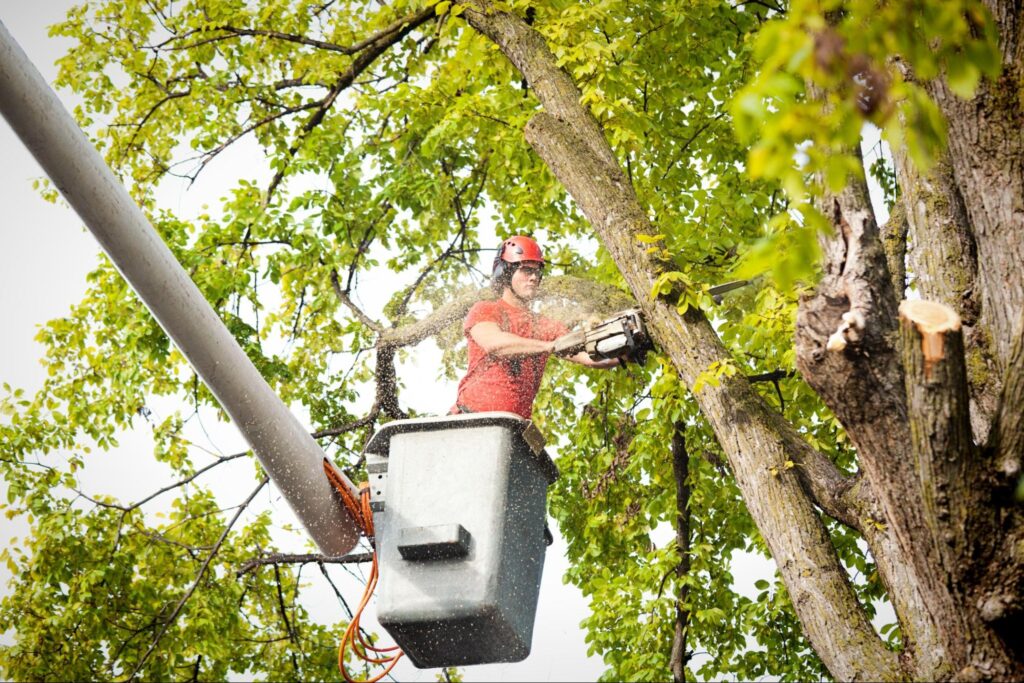Are your trees looking under the weather? Even the mightiest trees can succumb to sneaky diseases and pests. At Red’s Tree Service, our expert arborists are here to turn the tide in your favor. In this blog, we’ll guide you through recognizing signs of distress and implementing effective treatments to keep your trees standing tall and healthy. First up, let’s unpack how to spot and understand common tree diseases—your first line of defense in proactive tree care.
Identifying Common Tree Diseases
Understanding the symptoms of diseases that trees can get is important for timely and effective intervention. Here’s how you can recognize some of the most prevalent issues affecting trees today:
- Discoloration and Leaf Drop: Watch for leaves that change color out of season or drop off prematurely. These can be signs of diseases like anthracnose or leaf spot.
- Fungal Growth: Mushrooms or fungal growths at the base of the tree or on the trunk can indicate internal decay or root diseases.
- Cankers: Sunken, diseased areas of bark that can girdle a branch or trunk, eventually killing the tree if left untreated.
- Rusts: Look for orange or yellow powdery spots on leaves, which are typical of rust diseases. They hinder photosynthesis and can severely weaken a tree.
By keeping an eye out and looking for these signs, you can catch diseases early and call experts like Red’s Tree Service before any major damage occurs. Now, we’ll discuss the signs of pest infestations, which can be just as devastating to your trees’ health.
Recognizing Signs of Pest Infestations
Pest infestations can swiftly compromise the health of a tree if not identified and managed promptly. Here are key indicators that pests might be troubling your trees:
Borer Holes
Small holes in the trunk or branches often indicate the presence of borers, which can weaken and eventually kill trees by tunneling through their vital tissues.
Leaf Damage
Look for chewed leaves or those with irregular holes, a sign of caterpillars or beetles feasting on the foliage.
Webbing and Nests
Spider mites and caterpillars may leave webbing or construct nests on branches and leaves, signaling a severe infestation.
Sawdust and Frass
Accumulations of fine sawdust or frass (insect droppings) at the base of the tree or in branch crotches are clues of active wood-boring pests.
Prompt treatment can mitigate the damage and help preserve the tree’s structural integrity and aesthetic value. Next, we’ll explore effective treatment strategies for diseases and pests, ensuring you have the tools to protect and rejuvenate your trees.

Effective Treatment Strategies for Tree Diseases and Pests
When tree diseases or pest infestations strike, a strategic and informed response is crucial to saving affected trees. Here at Red’s Tree Service, we employ a comprehensive approach to tackling these issues, ensuring your trees receive the best possible care. Let’s break down the steps involved in effectively combating tree diseases and managing pest outbreaks.
Combating Diseases: Step-by-Step
- Diagnosis: Confirm the specific disease affecting your tree with a professional evaluation from Red’s Tree Service.
- Treatment Application: Depending on the disease, apply the appropriate fungicides or bactericides during the optimal treatment window to halt progression.
- Recovery Monitoring: Continuously monitor the tree’s recovery, adjusting treatments as necessary and ensuring no recurrence.
Managing Pest Infestations: A Tactical Approach
- Physical Removal: Where possible, physically remove visible infestations, such as nests or large groups of insects.
- Chemical Treatments: Employ targeted insecticides, carefully selected and applied by Red’s Tree Service professionals to minimize impact on the tree and surrounding environment.
- Biological Controls: Introduce natural predators or beneficial insects that combat the pest population, promoting a balanced ecosystem.
By employing these targeted strategies, you can effectively address and manage the complex issues of tree diseases and pests. Our next section will dive into the necessity of professional intervention and when it becomes critical to involve experts like Red’s Tree Service for the health of your trees.
The Role of Professional Arborists in Tree Care
When it comes to managing tree diseases and pest infestations, the expertise of professional arborists like those at Red’s Tree Service is invaluable. Here’s why involving professionals is crucial for the health of your trees:
- Advanced Diagnostic Tools: Arborists are equipped with specialized tools and techniques to accurately diagnose tree health issues that might be invisible to the untrained eye.
- Customized Treatment Plans: Based on the diagnosis, our team develops tailored treatment plans that address the specific conditions of each tree, ensuring more effective and lasting results.
- Safety and Compliance: Handling tree diseases and pests often involves the use of chemicals that require careful handling to ensure safety and compliance with environmental regulations. Professionals are trained to apply these treatments safely, protecting both the tree and its surrounding environment.
- Preventive Care and Maintenance: Beyond treating existing issues, arborists provide ongoing maintenance and preventive care to help protect your trees from future problems, extending their lifespan and enhancing their beauty.
Utilizing the knowledge and skills of a professional arborist not only saves your trees but also safeguards your investment in your landscape. Up next, we’ll summarize the benefits of consistent professional tree care and how it can contribute to the overall value and safety of your property.
Long-Term Benefits of Professional Tree Care
Consistent care from professional arborists like those at Red’s Tree Service ensures your trees remain a valuable asset to your property. Regular monitoring and maintenance prevent the escalation of diseases and control pest infestations before they become severe. Moreover, well-maintained trees can significantly increase property value, making professional tree care an excellent investment for the future of your home and its surroundings.

Branch Out with Confidence: Trust Red’s Tree Service
Ensure the health and beauty of your trees with the expert care of Red’s Tree Service. Our team provides the knowledge and skills necessary to tackle any tree disease or pest issue effectively. We’re located in Memphis and ready to help you cultivate a safer, more vibrant landscape. Don’t leave your trees to chance—contact us today and see your green investments flourish!
This post first appeared on https://redstreeservice.com